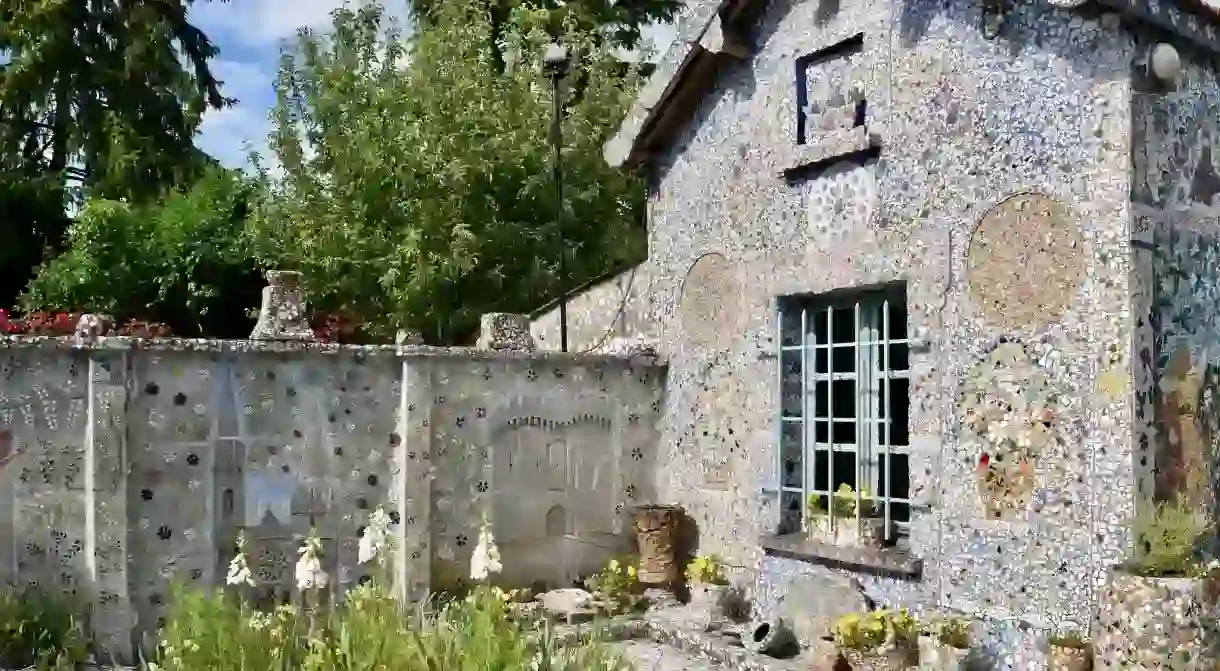The French Cemetery Caretaker Who Accidentally Became an Artist

It was 1938 when a few bits of shattered crockery lying in a field caught Raymond Isidore’s eye. The discovery sparked a revelation for the graveyard attendant, whose subsequent penchant for collecting ceramic fragments would lead him to embellish his home from floor to ceiling, inside and out with exquisite mosaics. An otherwise ordinary man, Isidore’s legacy is La Maison Picassiette: a French masterpiece so extraordinary that it would even beckon the great Pablo Picasso.
Loosely translating to “plate thief,” Picassiette was the local nickname Raymond Isidore acquired as he obsessively forged his collection of broken pottery and glass. For nearly three decades, Isidore mined the fields and streets of Chartres, France, for new additions until he had accumulated some alleged 15 tons of shimmering shards.
https://www.instagram.com/p/BUbapnAAL8v/?tagged=lamaisonpicassiette
Isidore had purchased a humble plot of land near Chartes Cathedral in 1929. He found work tending the grounds at a local cemetery, and built a modest cottage for himself and his wife. In its early stages, Isidore’s passion project sent him hunting for shiny bits and pieces that simply attracted his eye, and he initially pooled them his garden. “I would walk in the fields when I happened to see small pieces of glass, pieces of china, broken dishes,” he explained. “I picked them up without any specific intention, for their colors and their flicker. I sorted the good, threw the bad.”
But a prophetic dream would prompt Isidore to do something extraordinary with his unusual reserve. He would go on to cover his entire cottage—not to mention almost every surface and object in between—in kaleidoscopic fragments of texture, color, and light.
https://www.instagram.com/p/BeGxNY0BucR/?tagged=lamaisonpicassiette
The cottage interior was Isidore’s first venture. He tszujed the walls with floral and aviary patterns, painting some of the spaces in between with idyllic frescoes. He tiled the ceilings and the floors before moving on to the tables and chairs, the bed, even his appliances. The entirety of his home showcased pastoral scenes, biblical passages, plants, animals, organic patterns, and landscapes. And he had only just begun.
In 1945, he moved on to his home’s exterior. Then the courtyard. He built and decorated a chapel and a summer house. He bought a nearby plot of land and tiled the pathways. He transformed his property into an exalted scene of Christian symbols, breathtaking vistas, intricate patterns and landmarks—Chartres Cathedral included. And he did so without any prior training or artistic inclination. “I, who have never known how to draw in my life, I do not understand how, yet I arrived at such a result,” Isidore told journalist Robert Giraud.
https://www.instagram.com/p/BX7QSNkg_Tp/?tagged=lamaisonpicassiette
Unsurprisingly, La Maison Picassiette had piqued the interest of the press. Writers and photographers flocked to Isidore’s technicolor abode. In 1954, Pablo Picasso paid the accidental artist a visit. In 1960, American magazine Popular Mechanics ran a story about Isidore’s project, spreading the word to audiences across the pond.
The Tomb of the Spirit—a nod to Isidore’s service as a cemetery sweeper—was La Maison Picassiette’s final touch. Upon the completion of the tomb, Isidore had tiled every square inch of available surface. It was 1962 when Isidore considered La Maison Picassiette a finished masterpiece. He died two years later on September 7, 1964, just one day shy of his 65th birthday.
https://www.instagram.com/p/9TUsczQKxd/?tagged=lamaisonpicassiette
Isidore’s wife remained in La Maison Picassiette until 1979, and in 1981 the site fell under the ownership of the City of Chartres. In 1983 it was granted status as a historical monument, and it remains open to the public as a museum to this day.
“My garden is the Dream realized,” Isidore told the French photographer Gilles Ehrmann. “It is the dream of life where we live in spirit in eternity.”
https://www.instagram.com/p/BaHI7NxFa8j/?tagged=lamaisonpicassiette
La Maison Picassiette is located at 22 Rue du Repos, 28000 Chartres, France. For opening dates and times, please click here.













